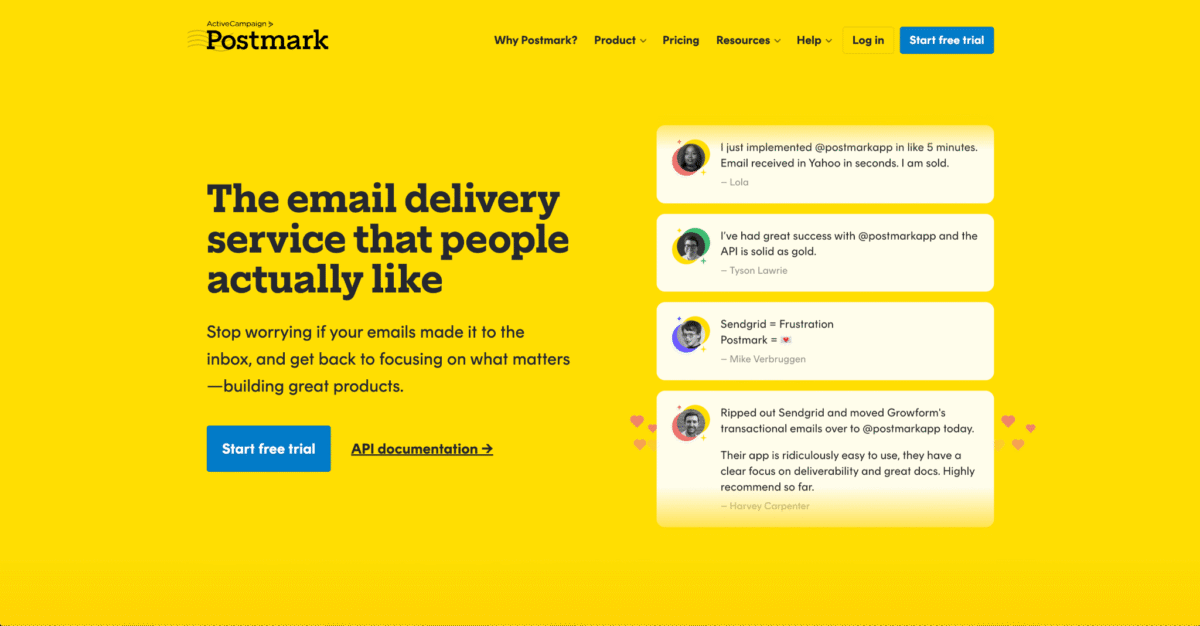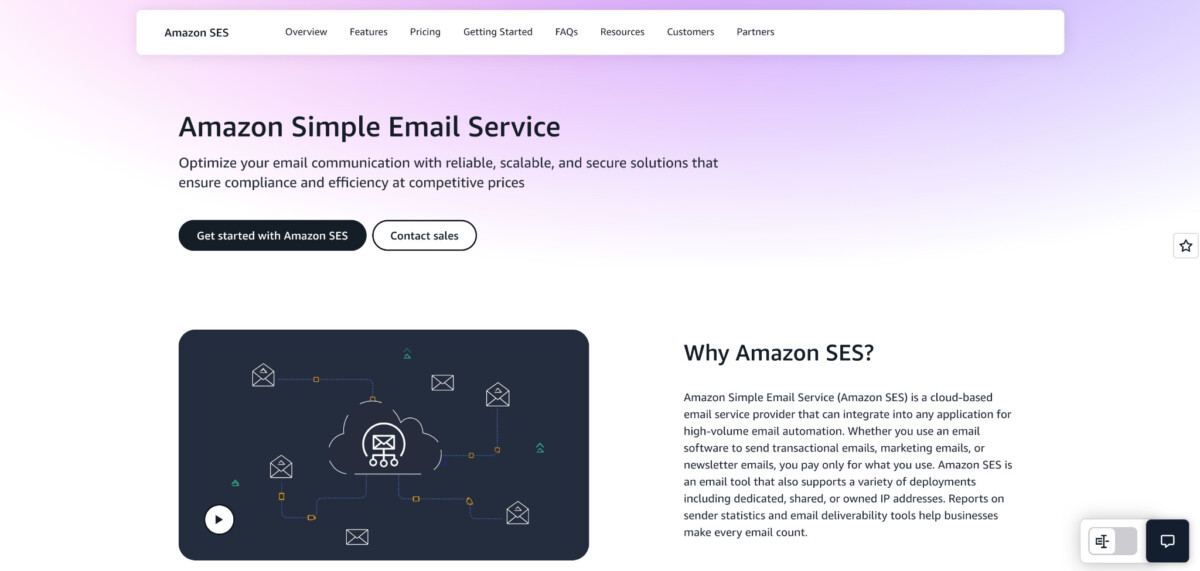Key Takeaways
- Achieve higher user retention by treating your email provider choice as a core product feature that guarantees reliable communication.
- Implement dedicated email streams and strong analytics to protect your sender reputation and ensure maximum deliverability rates for all messages.
- Prioritize user trust by recognizing that reliable emails, like password resets, are essential human interactions, not just background notifications.
- Note that specialized email platforms like Mailtrap are designed to unite transactional sending, bulk email, and powerful analytics in one place.
You probably live and breathe the user journey, obsess over every click, every notification, and every interaction.
But what about the most critical part of that journey?
Password resets, trial expirations, and critical alerts aren’t just emails; they are integral parts of your product experience. When they fail, the product fails.
This is why your choice of an SMTP provider is not merely an infrastructure decision. It’s a product decision. Get it right, and you build a foundation for reliable communication and growth.
Deconstructing the essentials: what to demand from your SMTP provider
Your email infrastructure is defined by a few non-negotiables. Namely.
- Deliverability and sender reputation: A top-tier provider will help you achieve high deliverability rates and give you the tools to monitor and protect your sender reputation.
- Scalable infrastructure: As your user base grows, so does your email volume. That’s why you need an infrastructure that can handle increases in email volume without breaking a sweat. The right provider ensures that a surge in sign-ups doesn’t lead to a bottleneck or any performance hiccups.
- A developer experience: Your engineers shouldn’t be bogged down by a clunky, poorly documented API. A clean, flexible API is a must-have. It allows your team to integrate, automate, and manage email functionality as a seamless part of their workflow.
- Actionable analytics: You need deep, actionable insights into your email performance. This means going beyond open and click rates. You need a helicopter view of your deliverability across all major mailbox providers to spot and fix issues before they impact the overall performance of your emails.
- Ironclad security and compliance: In a world of GDPR and constant cyber threats, you cannot afford to compromise on security. Your provider must be a fortress, protecting your user data with robust security protocols and ensuring full compliance with international regulations.
The top 5 SMTP providers for product teams
1. Mailtrap: the best for product teams

Mailtrap is an email platform built for product and dev teams who need an email API/SMTP with high inboxing rates, fast delivery, 24/7 expert support, and industry-best analytics.
- Why Mailtrap is #1 for product teams: The platform uses dedicated IPs and separate sending streams for transactional and bulk emails, provides helicopter-view dashboards and drill-down reports with which you can track important email metrics. Additionally, it supports SDKs for major programming languages and has over 25 pre-made code snippets for easy integration.
- Key features: High deliverability rates, industry-best analytics, safe and fast scaling, expert support
2. SendGrid: the high-volume veteran

SendGrid has been a major player for years, and for good reason. It’s built a reputation on a robust infrastructure that can reliably handle high email volumes, making it a go-to for many large-scale enterprises.
- Why it’s on the list: If your primary concern is raw sending volume for a product with millions of users, SendGrid’s battle-tested platform is a solid choice.
- Key features: Proven scalability for high-volume sending, detailed analytics, and a suite of marketing tools.
3. Postmark: the transactional email specialist

Postmark has distinguished itself as a minimalistic SMTP provider with laser precision on transactional emails (though there’s an option to send bulk emails as well). They prioritize speed and reliability for the emails that are most critical to the user experience.
- Why it’s on the list: For products where the immediacy of notifications (like a login code or a purchase receipt) is crucial, Postmark’s specialized infrastructure can be an advantage. It also offers separate sending streams if you want to send different types of emails.
- Key features: A dedicated focus on transactional email, transparent delivery stats, and solid customer support.
4. Mailgun: The API-first powerhouse

Mailgun offers a reliable SMTP service geared for developers. It was designed from the ground up with a flexible and powerful API at its core, making it ideal for teams that need to build custom email workflows.
- Why it’s on the list: When your product requires complex email routing, parsing, or even validation, Mailgun has the granular control that development teams need.
- Key features: A reliable SMTP, flexible RESTful API, advanced email validation services, and strong deliverability tools.
5. Amazon SES: the AWS ecosystem solution

Amazon Simple Email Service (SES) is a highly practical and cost-effective choice for teams already operating within the Amazon Web Services ecosystem. It’s a no-frills, high-volume sending engine. But to stress, it really demands an experienced dev team.
- Why it’s on the list: For products that need to send a massive number of emails and want to leverage its pay-as-you-go pricing, Amazon SES is incredibly economical at scale. Its seamless integration with other AWS services is a major benefit for teams already on the platform.
- Key features: Pay-as-you-go pricing, extreme scalability, and native integration with the AWS ecosystem.
Wrapping up
Your SMTP provider is a silent partner in your product’s success. Choosing one is a strategic move that directly impacts your user experience and your ability to scale.
While there are several strong SMTP contenders for product teams that require a single platform to manage their entire email infrastructure and send emails that will consistently land in recipients’ inboxes, Mailtrap’s Email Delivery Platform is the definitive choice.
Frequently Asked Questions
Why is my choice of an SMTP provider considered a “product decision,” not just an infrastructure choice?
Choosing an SMTP provider directly impacts your user’s experience with the product. Emails like password resets or critical alerts are key interactions. If these fail due to a poor provider, the product itself feels unreliable to the user, damaging trust and retention.
What is “deliverability,” and how can a good SMTP provider help to improve it?
Deliverability is the rate at which your emails successfully land in a user’s inbox, not the spam folder. A top-tier provider uses dedicated sending streams and monitoring tools. This helps you build a strong sender reputation, which is the main factor mail services like Gmail use to decide if your email is trustworthy.
How do scalability and high volume affect transactional email services?
Scalability means your email infrastructure can handle sudden, large increases in email volume, such as during a product launch. Without it, a sudden surge in sign-ups could cause a bottleneck. The right provider prevents these hiccups, ensuring all critical alerts are delivered quickly, even during peak times.
What are “actionable analytics,” and why are they more important than just knowing open rates?
Actionable analytics go beyond simple open and click rates. They give you a deep view of your email performance across different mailbox providers, like Google and Outlook. This “helicopter view” helps you spot and fix hidden delivery problems before they become major issues.
Why is an API-first focus important for a developer team integrating an SMTP service?
An API-first design (like Mailgun offers) provides a clean, flexible, and powerful backend for your engineers. It makes integrating and automating email functions into your product’s workflow much easier. This prevents your development team from getting stuck with clunky, poorly documented systems.
What is the main difference between an SMTP provider that specializes in transactional versus one that handles high-volume bulk emails?
Transactional email providers, like Postmark, focus on speed and reliability for time-sensitive, one-to-one messages such as receipts or password codes. High-volume providers, like SendGrid or Amazon SES, focus on handling massive amounts of emails efficiently, which is more suited for large marketing campaigns or products with millions of users.
Since Amazon SES is very cost-effective, why does the article say it requires an “experienced dev team?”
Amazon SES offers a simple, powerful, and scalable email engine within the AWS ecosystem. However, it is a basic service that requires your team to handle much of the setup and maintenance itself. This complexity, while economical, demands specialized knowledge for configuration, security, and deliverability monitoring.
When should a product team choose a specialized provider like Postmark over a broader platform like Mailtrap?
A team should choose Postmark if the single, most critical factor is the immediate speed of very specific transactional emails. However, most product teams benefit more from a single platform like Mailtrap that can manage both high-deliverability transactional and bulk emails from one place with best-in-class analytics.
What is the biggest misconception about adopting a new email infrastructure for a product?
A common mistake is thinking that all SMTP providers offer the same service, just at different prices. The truth is that quality greatly varies. A cheaper provider with poor security or low deliverability will ultimately cost your business more money and user trust than a slightly more expensive, reliable option.
What are the first three practical steps a product team should take after selecting a new SMTP provider?
After selecting a provider, you should immediately set up dedicated IPs and separate sending streams for transactional and bulk emails. Next, fully integrate the API using the provided SDKs and code snippets. Finally, focus on warming up your new IP address and closely monitoring the analytics dashboard to establish a strong sender reputation quickly.




